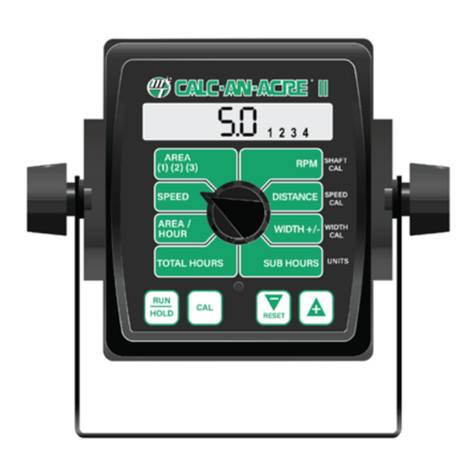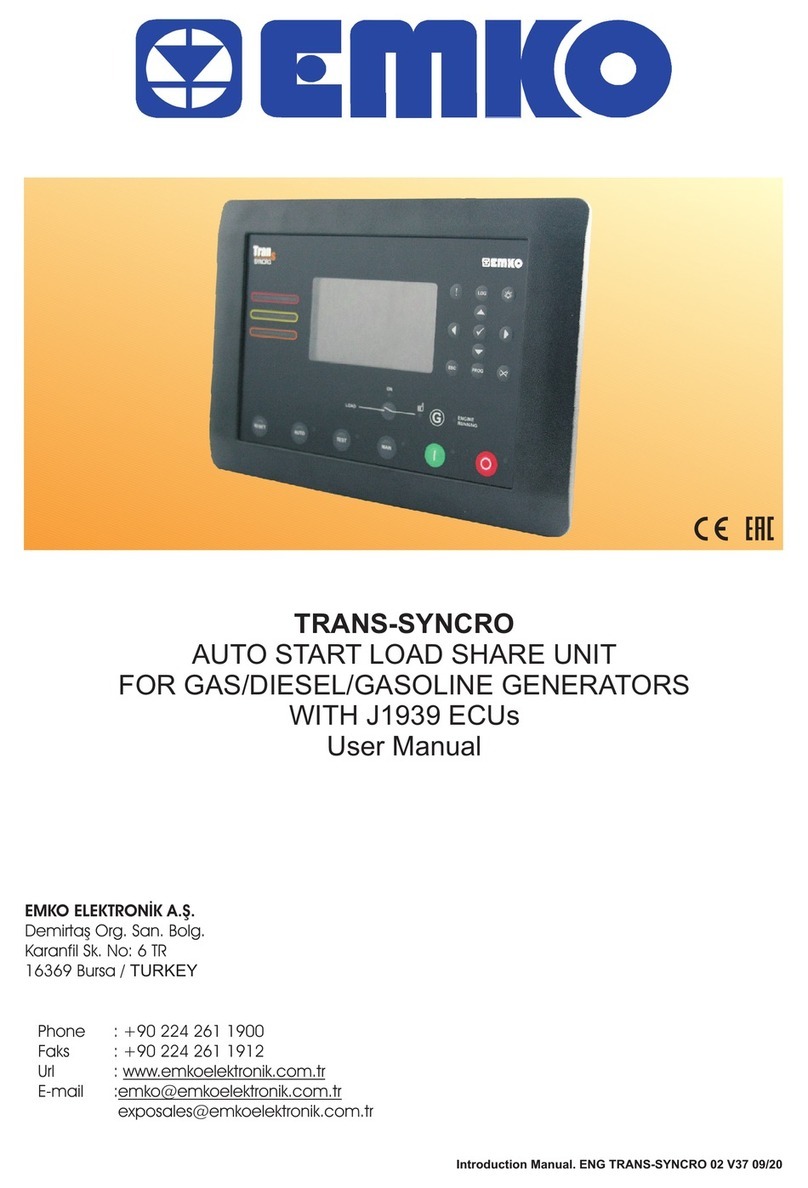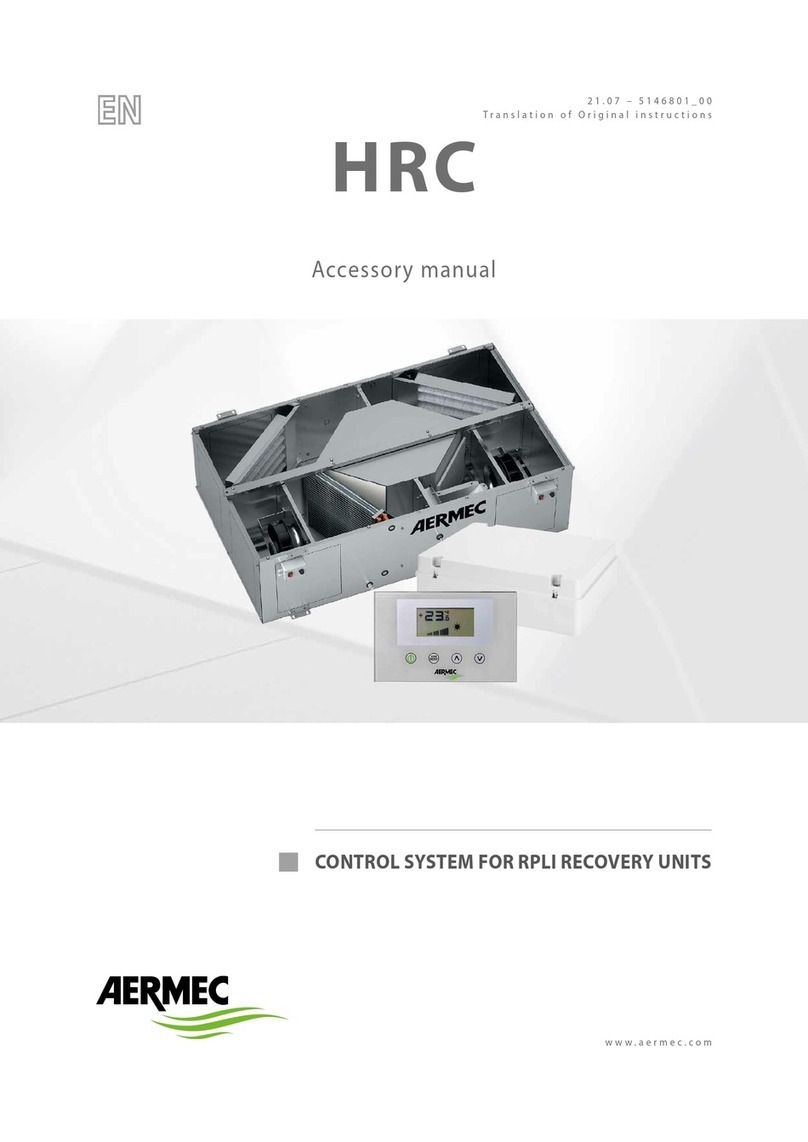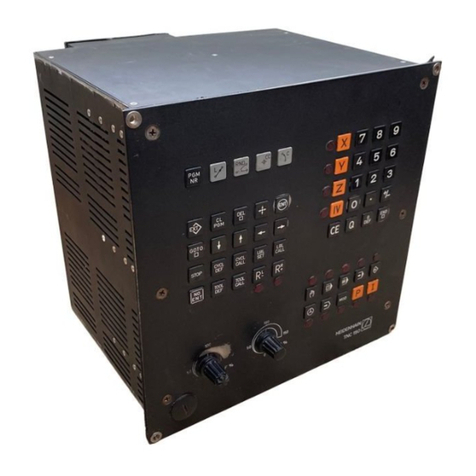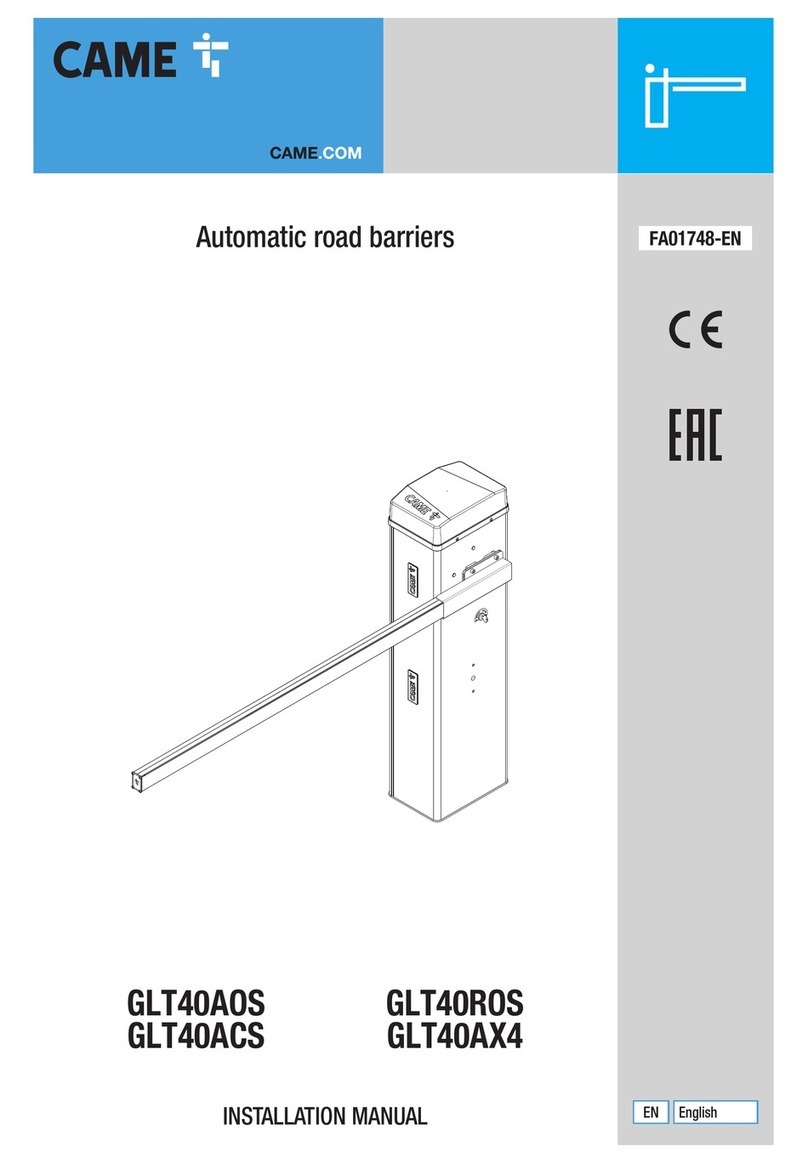
4
IThe maximum number of units that can
be connected to a Multichiller is Max 9
RVBH (each of which up to 4 compres-
sors) or Max 9 NRA (NRC, NLW, NBW)
Chiller unit means the following fami-
lies of models :
• NRA
• NRC
• NLW
• NBW
• RVBH
• NSB
• WSB
• NRL
Introduction
The scope of this project is to a realise
a control system (which hereon will be
called Multichiller) for the switching on
and off of chillers in a plant where seve-
ral chillers are installed parallel to each
other with constant water flow on the
individual evaporators.
It is possible to chose between different
chiller switch on/off logics:
Sequential: the chillers are switched on/
off one at a time (possible if each chiller
has its own pump that is switched on/off
with it)
Homogeneous: the chillers are switched
on/off at the same time (recommended if all
of the chillers have the same pump)
Combined: the chillers are switched
on and taken to a certain power that is
lower than maximum before switching
on others. (possible if each chiller has
its own pump that is switched on/off
with it)
The Multichiller regulates using its own tem-
perature probes. Once a chiller has been
switched on it uses its own temperature pro-
bes to regulate in an independent manner
from the others until it is switched-off by the
Multichiller itself.
3) Centralisation of information regar-
ding the state of the machine in a uni-
que display
ON/OFF
• Set point
• Detailed chiller alarms
• Chiller temperature and pressures
• Choking level of individual chillers
4) Management of chiller rotation with
possibility of maintaining the machine
as per emergency
• Rotation for balancing compressor
work hours
• Rotation for alarms
• Chiller switch-on sequence selection
can be set
5) Possibility of keeping a chiller as a
reserve in case of breakdown
Multichiller exclusive functions
In particular, the additional functions
performed by the Multichiller that are
not available for the management of
individual chillers, are the following:
1) Regulation of water temperature in a
unique point.
• Connection of plant water input and
output probe to the Multichiller
• Adjustment on the plant primary or
secondary (depending on the type of
plant)
• Pulldown (delays between the activa-
tion of one compressor and another)
• Introduction and disconnection of the
chillers (not of the individual compres-
sors) on the basis of the load
• Introduction in tandem, in parallel or
mixed
2) Centralised setting of the main func-
tioning parameters:
• ON/OFF
• Hot/Cold functioning
• Work set point:
- From analogue input, from keyboard
• Proportional band
• Timer
• Demand Limit:
- From analogue input
• Set point compensation:
- external air probe (optional for set
point compensation)
- from analogue input



